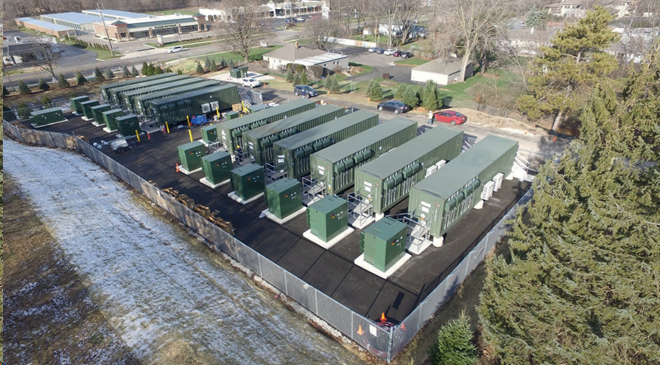The significance of state-of-charge
As published in PV Magazine September 2024
Everoze Partner Nithin Rajavelu considers the crucial importance of properly measuring and managing state-of-charge (SoC) for the efficiency, longevity, and safety of battery energy storage system (BESS) projects, especially in lithium ferro-phosphate (LFP) batteries, which are widely used for large-scale storage.
SoC is typically expressed as a percentage of a battery’s total energy storage capacity. For example, an SoC of 50% means a battery is half-charged. Accurate and reliable SoC measurement is essential for optimizing battery performance and maximizing revenue. Inaccurate SoC measurements can have significant financial implications. For instance, overestimating SoC can prevent an asset from delivering the full energy volume traded in energy markets, resulting in imbalance costs. Similarly, inaccurate SoC could mean an asset cannot provide ancillary or balancing services when required by a grid operator, leading to penalties for underperformance.
Errors of up to 5% can occur in the SoC measurement of advanced, well-maintained battery systems, and can be significantly higher in poorly managed systems. It is impossible to directly measure the SoC of a lithium-ion battery. Instead, various SoC measurement methods estimate the value based on voltage, current, and temperature measurements.
SoC measurement is influenced by various factors, including type of battery and cell chemistry; cell voltage, usage patterns, including the C-rate or time taken to fully charge and the depth of discharge; ageing; and environmental conditions such as temperature.
Classic SoC measurement methods, such as coulomb counting track the amount of charge entering and leaving a battery. More advanced techniques, such as Kalman filtering, combine multiple measurement methods and use mathematical models to improve accuracy.
A robust battery management system (BMS) is essential for monitoring the various parameters, measuring (or rather, estimating) SoC using the algorithms employed, and calibrating the resulting SoC as appropriate.
Unique challenges
The devil as always is in the detail, as LFP batteries pose unique challenges for SoC estimation. LFP batteries have a flatter voltage curve than other lithium-ion chemistries, meaning the voltage changes less significantly with SoC and making it more challenging to estimate SoC accurately using voltage-based methods alone. This flat curve requires more sophisticated algorithms and additional data points, such as temperature and current, to achieve precise SoC estimation.

Inaccurate measurements of state-of-charge can prevent battery storage assets from participating in ancillary and balancing service markets.
Real-time, voltage-based SoC measurements which require look-up tables are prone to errors as the voltage curve shifts upward during charging and shifts downward during discharging, introducing hysteresis – the phenomenon of physical effects trailing a change in status – into the measurements. This effect introduces an additional layer of complexity and an SoC algorithm and models need to adjust for this hysteresis to improve accuracy.
Despite their robustness, LFP batteries can suffer from SoC drift over time. Errors in coulomb counting – including initial-value errors, noise errors, and cur- rent measurement errors – can accumulate over time. Regular calibration of SoC measurements using periodic full charge and discharge cycles is necessary to correct such errors and restore accuracy.
While LFP batteries are generally more tolerant to temperature variation, extreme temperatures can still affect SoC accuracy. Advanced BMS solutions are needed to dynamically adjust SoC calculations based on real-time temperature data.
As LFP batteries age, their capacity gradually decreases and internal resistance increases, affecting SoC measurements. The same voltage or coulomb count might correspond to different SoC levels as the battery ages, leading to inaccuracies if SoC estimation algorithms are not adapted to account for such changes. Continuous monitoring and adaptive algorithms that adjust for ageing parameters are necessary to maintain SoC accuracy over a battery’s lifetime.
SoC issues can also exacerbate imbalances across battery racks and modules within a string. In a large BESS, multiple LFP battery modules are connected in series to form a rack and multiple racks connected in parallel configurations. If SoC is not accurately managed, some modules or racks may become over- charged while others are undercharged, leading to uneven wear and reduced over- all efficiency.
Effective management of SoC is not just a technical necessity – it is the linchpin for unlocking the true potential of BESS systems. The right BMS transforms these challenges into opportunities by using cutting-edge adaptive algorithms and real-time data to adapt and optimize. With robust SoC measurements, opera- tors can reduce imbalance, maintain system health, and maximize efficiency, all while safeguarding their investment.



